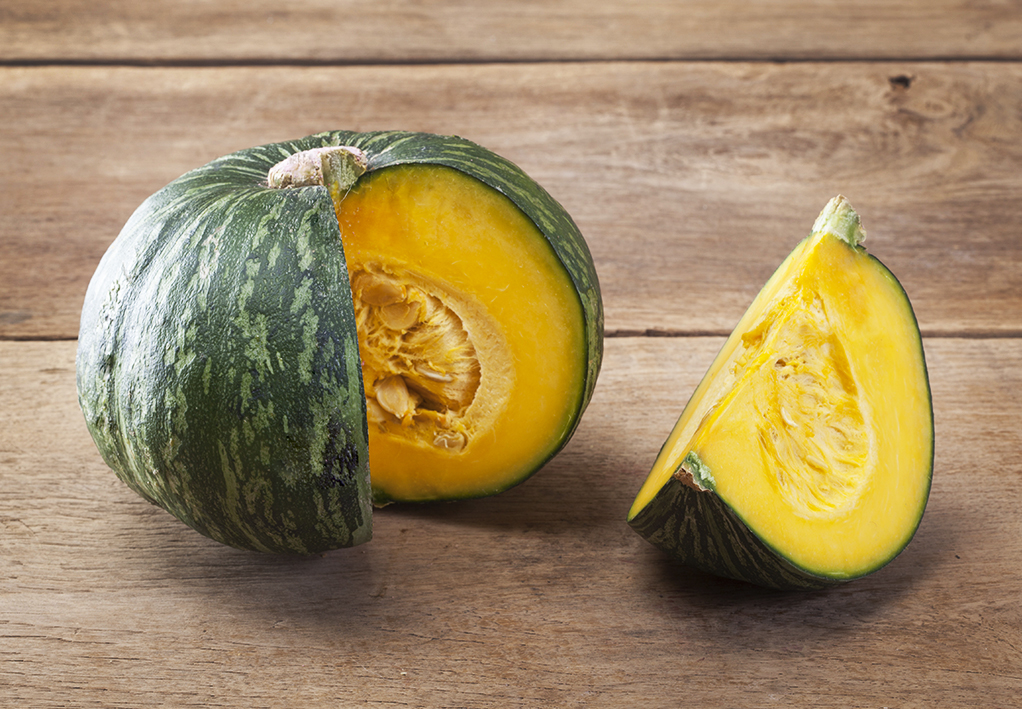
Kabocha squash is easy to love. Fluffy textured and nutty like chestnuts, rich like sweet potatoes, and bright-orange like turmeric – it is uniquely delicious, versatile, and wholesome. Kabocha has been a longstanding staple in Japanese cuisine, and while growing in popularity, we wonder what has taken North Americans so long to follow suit! Below we provide some tips for giving kabocha a try and maximizing its goodness.
Why we (and the Japanese) love it
In Japan, kabocha (a.k.a., Japanese pumpkin) is enjoyed in a variety of ways: tempura battered and fried, slow simmered in curries, and even served in desserts. Japanese children are told to “eat up,” their parents long recognizing its nutrition merits, including beta carotene, iron, and vitamin C. Today, cooks around the world have taken notice of the unique qualities of kabocha. It’s great for roasting and stuffing, and there is nothing like the velvety texture of pureed kabocha, perfect for soups and concoctions like gnocchi.
How to prepare
We like roasting kabocha whole, which eliminates the need to cut through its dense flesh altogether. But cutting kabocha is absolutely possible – just be careful! Use a sharp knife to slice the squash in half, scoop out the pulp and seeds, and then slice into wedges. Like acorn and delicata squash, the skin is completely edible (and full of nutrients). In Japan, American-size ovens are less common, so steaming is typical. This gentle cooking method is great: it only requires 15 minutes and leaves you with tender, moist results.
How to buy and store
When picking out your squash, consider the weight and color. Kabocha should feel heavy for its size and the skin should be a rich, deep green color. Light-colored specks, streaks, or patches are normal – some squash get these as they ripen. Make sure the rind is firm with no soft spots. Kabocha can be stored for up to a month or longer in cool, dry conditions.
Cooking with kabocha
Here are five excellent ways to cook with kabocha, which showcase its incredible versatility. The squash can generally be substituted for most other hardshell squash. For an interesting take on your favorite pureed potato dishes, try swapping out potatoes for kabocha.